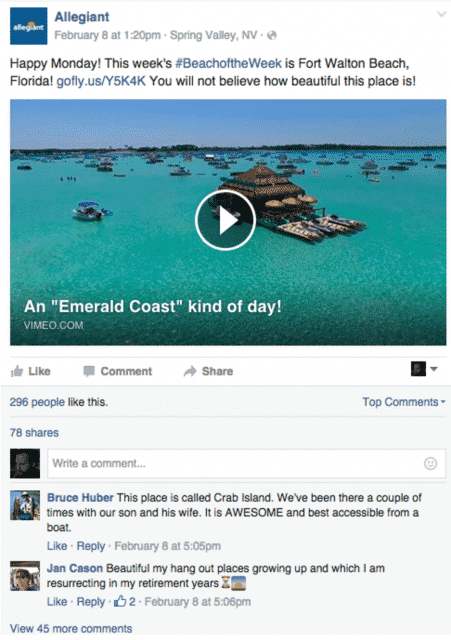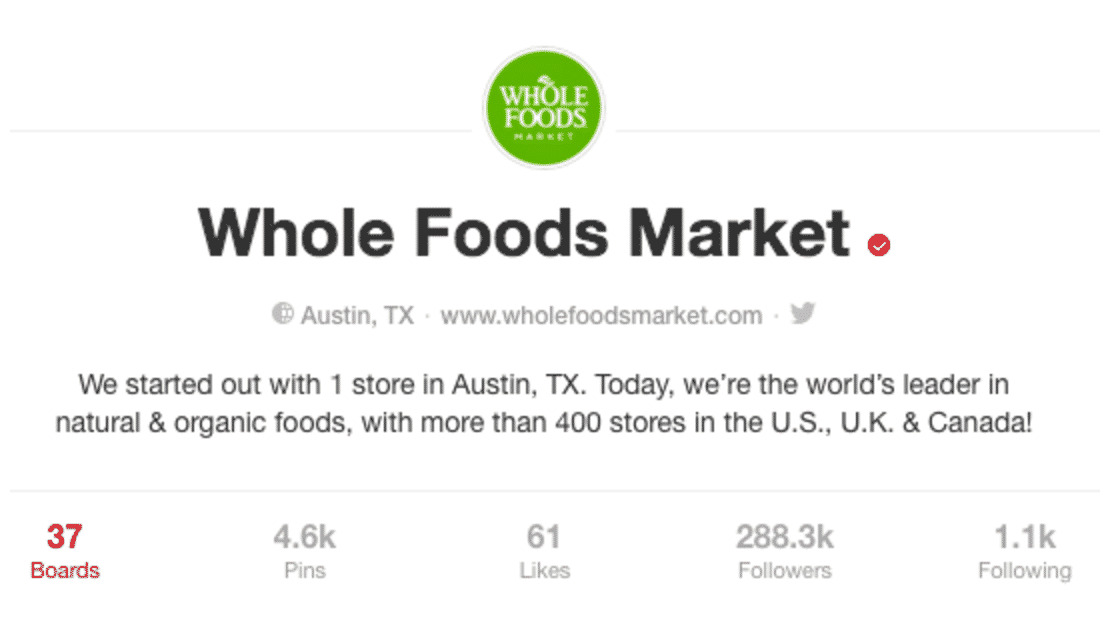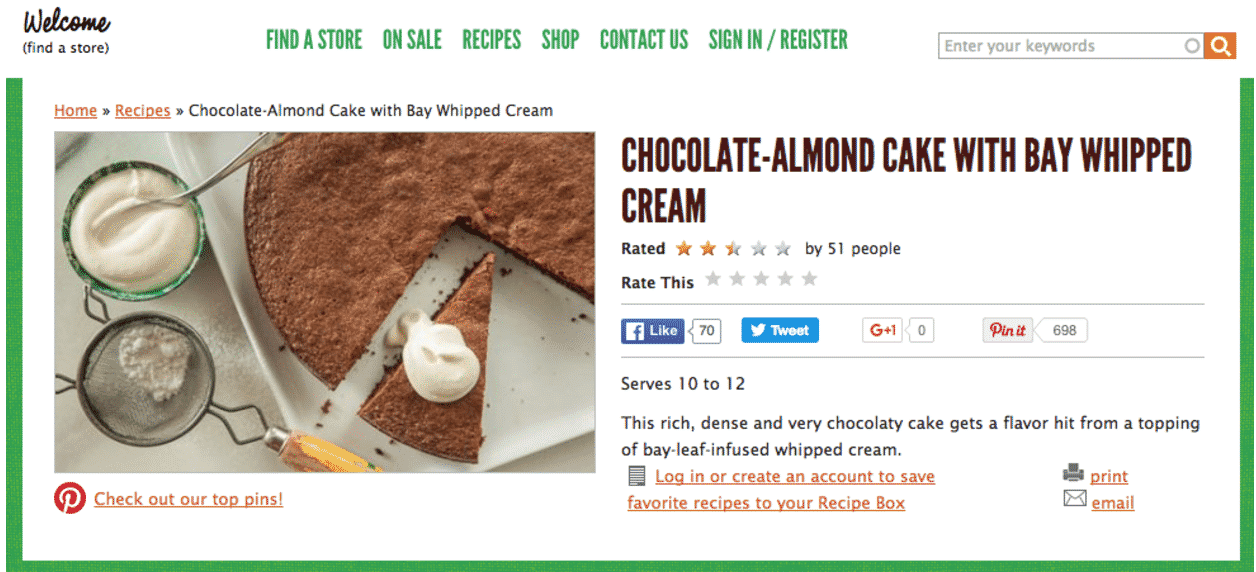So far we’ve looked at the competition’s own website, and dug through all the business information that we could find. Now it’s time to start looking at what they are doing elsewhere on the web. First stop: Social media.
In this lesson we will dive into four major social platforms. We will look at Twitter, Facebook, Instagram, and the champion of aspirational marketing, Pinterest.
Once you have found a company’s Twitter account (if it is not linked from their website or blog, try Google or Twitter’s own search) there are a few simple things to look for:
A general theme with Twitter is that it is easy to fake it. Fake followers, mass following, and automated posting make it hard to tell for sure from a glance whether a company is successfully using Twitter or just putting on a good show. To tell verify that, you will have to look a little deeper.
Assuming they are not inflated, large numbers for the primary Twitter account stats (followers, following, and number of posts) do give a general indicator of success on Twitter. Certainly, a low follower count means that no one is listening. And a steady stream of tweets with very few followers is a good indication that the company is paying lip service to Twitter but does not really get it.
To get a little more context, scroll down their feed to look at how often they post, and when they last posted. Frequent, and recent tweets give a good indication of engagement with Twitter. If their last tweet is two years old, you can safely assume they have given up.
Beyond that, look for conversations and mentions (people including the brand’s user name in their tweets). Does the brand reply to people who send them tweets? Do they actively engage other people (offering help, starting conversations, resolving concerns, discussing industry topics, etc.)? Those are all signs of effective Twitter use.

Assessing a company’s Facebook presence is fairly similar to Twitter. The primary indicator of popularity on Facebook is page likes, but as with Twitter, those do not tell the full story. A page that has thousands of likes is probably more popular and active than a page that has a couple hundred, but not necessarily.
What you are looking for on Facebook is the frequency of posts (should be fairly regular and typically at least once a week, if not daily, for active pages), and how those posts are being received. Many organizations post frequently on Facebook but fail to get much traction with their intended audience. Those that do get traction are easy to spot because their posts get likes, shares, and comments. This post from Allegiant Air is a good example:
If you find a competitor with an active Facebook following, take note of their posting strategy. What types of content do they share (videos, articles, photos, studies, infographics, etc.)? Are they creating their own content or sharing other people’s? What gets the most engagement? Chances are, your audience is fairly similar to theirs, so you may be able to take a page from their playbook to help guide your own strategy.
Depending on your industry and business type, Instagram may be less relevant than more general social platforms like Facebook and Twitter. However, for certain types of businesses, Instagram can be an extremely effective platform for brand promotion. Instagram lends itself well to B2C, lifestyle focused businesses (photography, fashion, food and beverage, home goods, vehicles, outdoors, travel, art, film, music, etc.).
The primary success metric on Instagram is followers, but once again, success on Instagram is all about engagement. A large following is important, but frequent posts that get likes and comments tell the real story about a company’s performance.
As a side note, if you want to look beyond the competition you are already aware of, Instagram can be a great place to find up and comers. Instagram’s own search, particularly for hashtags, can be a good way to find popular accounts. Third-party Instagram tracking tools like Websta.me can also be helpful. Search for a broad keyword related to your business and Websta will pull up a list of tags and top users related to that term. For example, here is a search for “design”.

There are two primary ways that businesses engage with Pinterest. The first is by establishing a brand presence on Pinterest itself. Businesses can sign up for verified profiles where they can create their own pin boards which other people can follow.
If your competitor has a profile, you should be able to find it by searching for their company name on Pinterest. Their profile will give you an idea of how actively they use Pinterest by displaying the number of boards (themed collections of pins), pins (bookmarked images), likes, followers, and users they are following.

The other way that businesses use Pinterest is by encouraging people to pin content from their own site, thereby sharing it with their friends and followers on Pinterest. This can be a very effective traffic-generation strategy for companies whose products or content play well with the aspirational nature of Pinterest (Whole Foods or Harley Davidson, for example). Look for “Pin it” buttons near to product or other imagery. Helpfully, “Pin it” buttons usually display the number of pins the associated image has received, giving you an idea of the item’s popularity and an indication of your competitor’s overall success with Pinterest.

Social media has become an important part of the modern marketing mix, and researching your competitors’ social presence is a great way to unearth opportunities and ideas for your own business. In the next section we will move from social to search, digging into your competitors’ search engine rankings and how they got them.
END OF PART THREE
